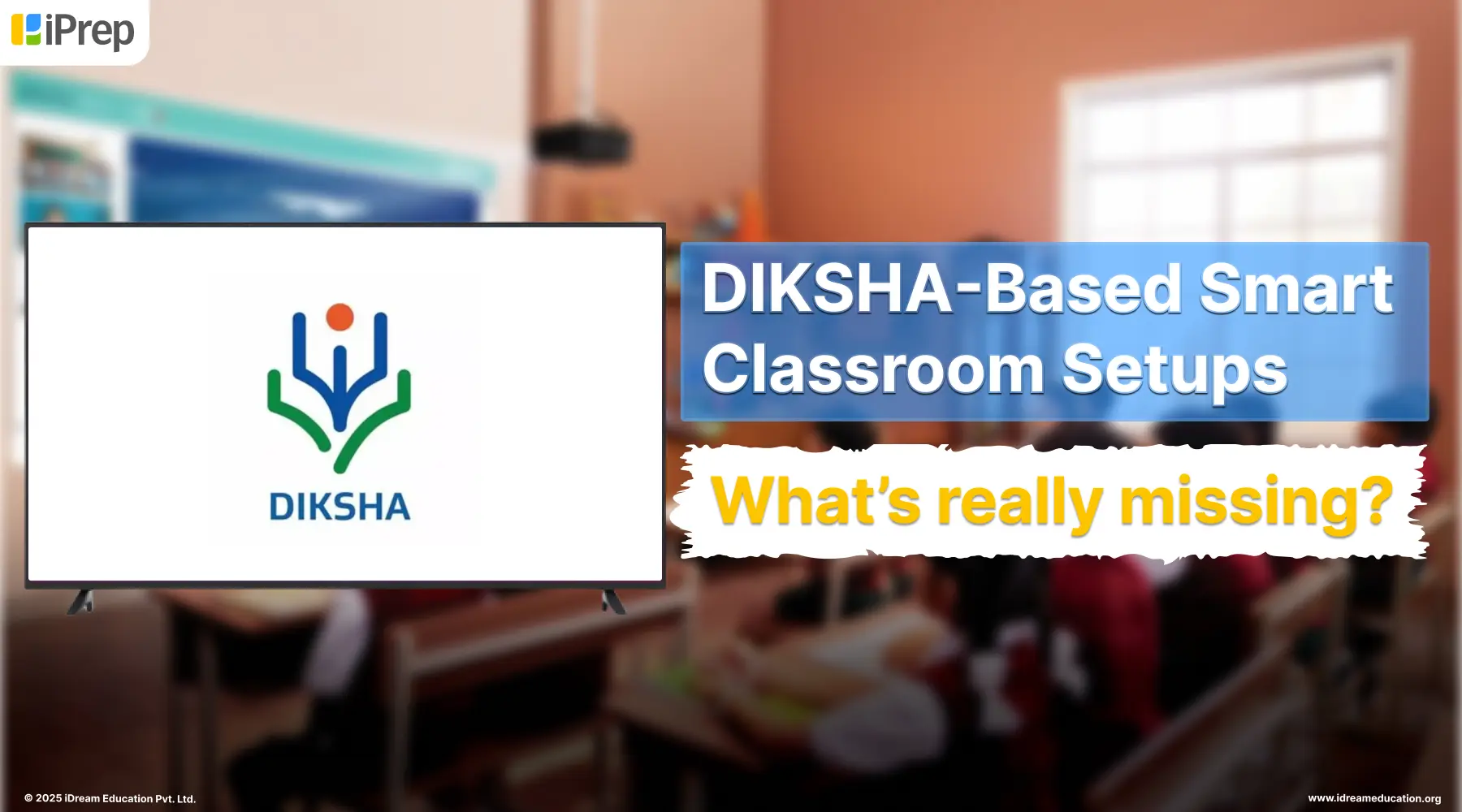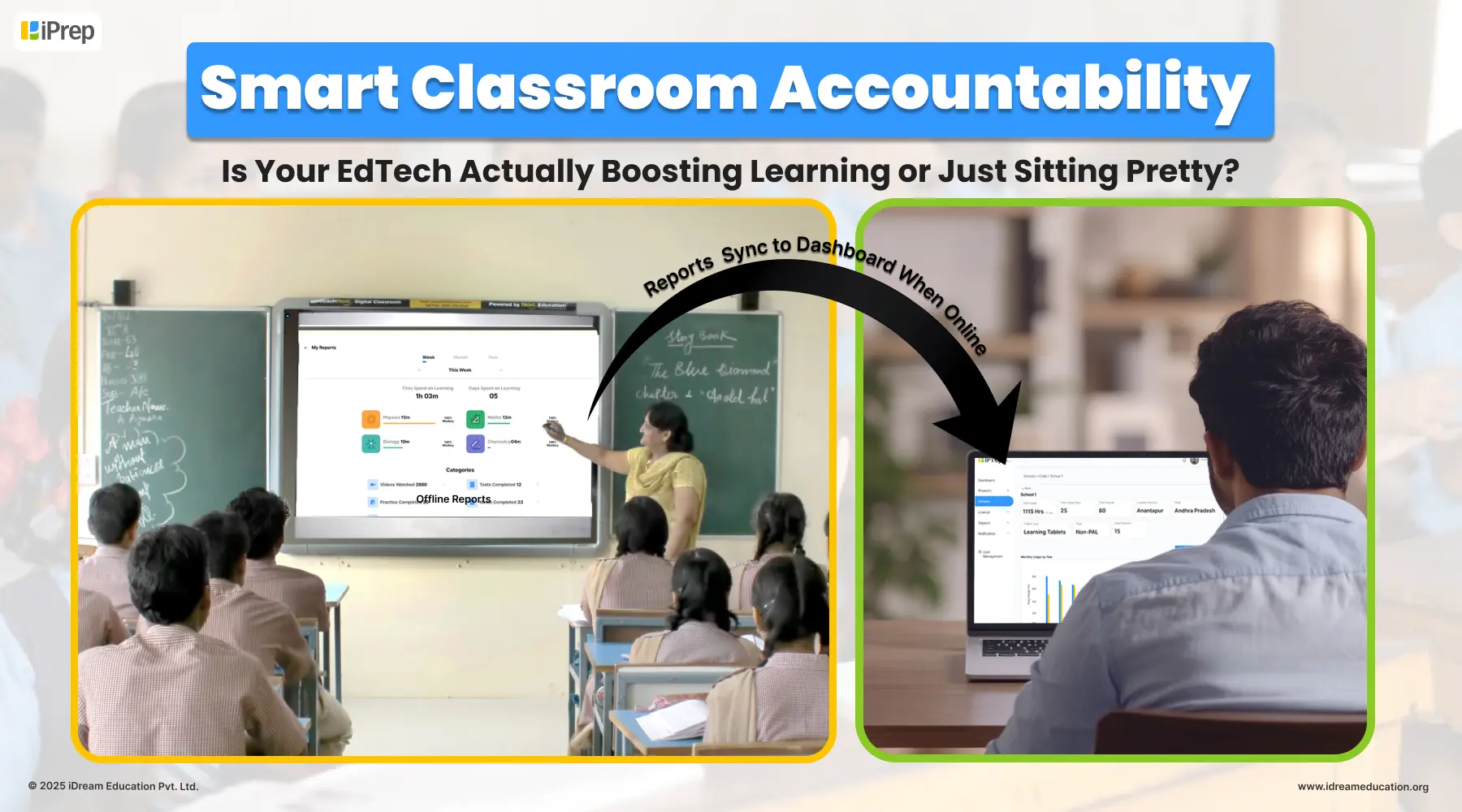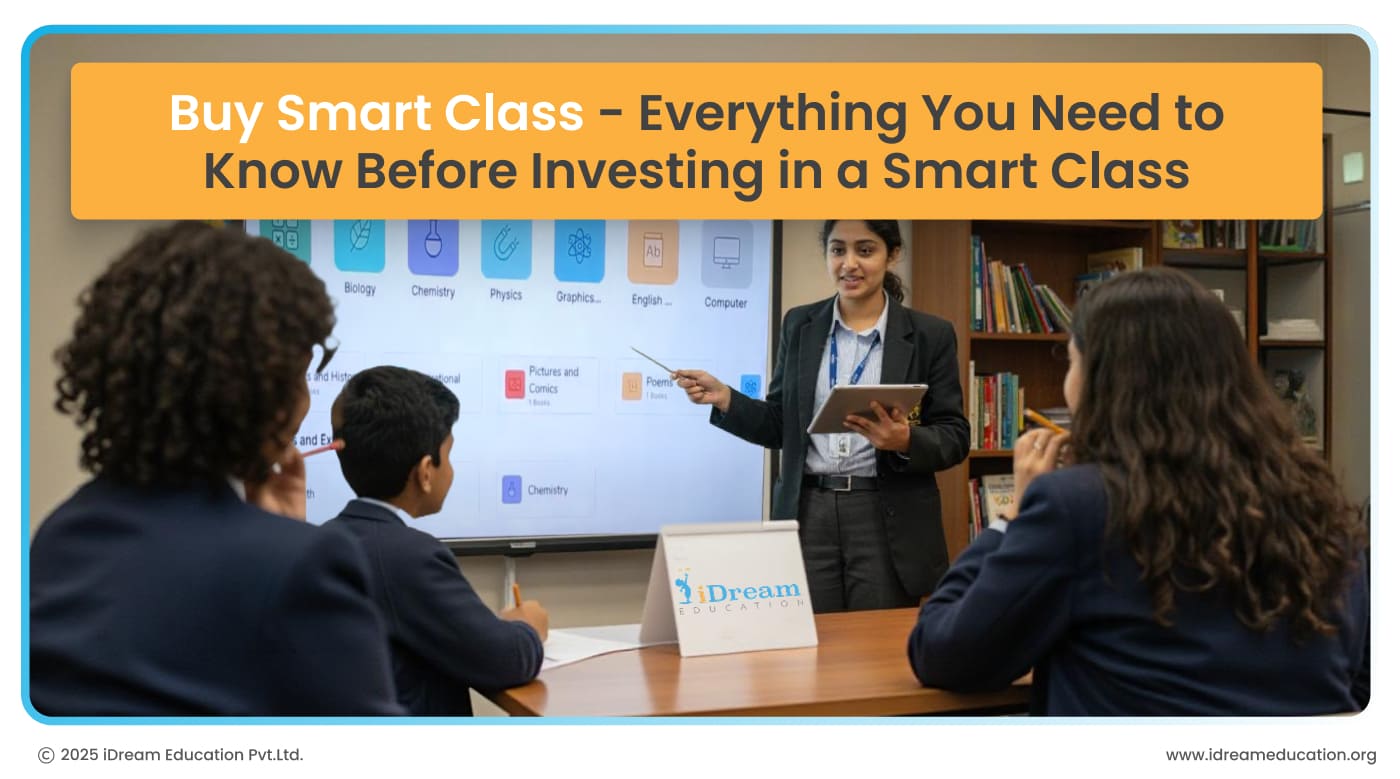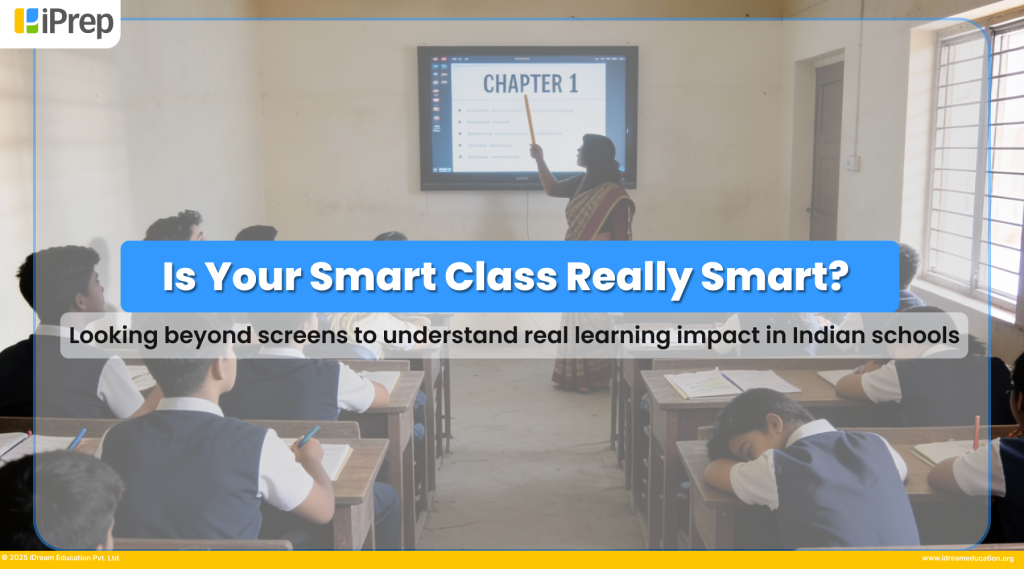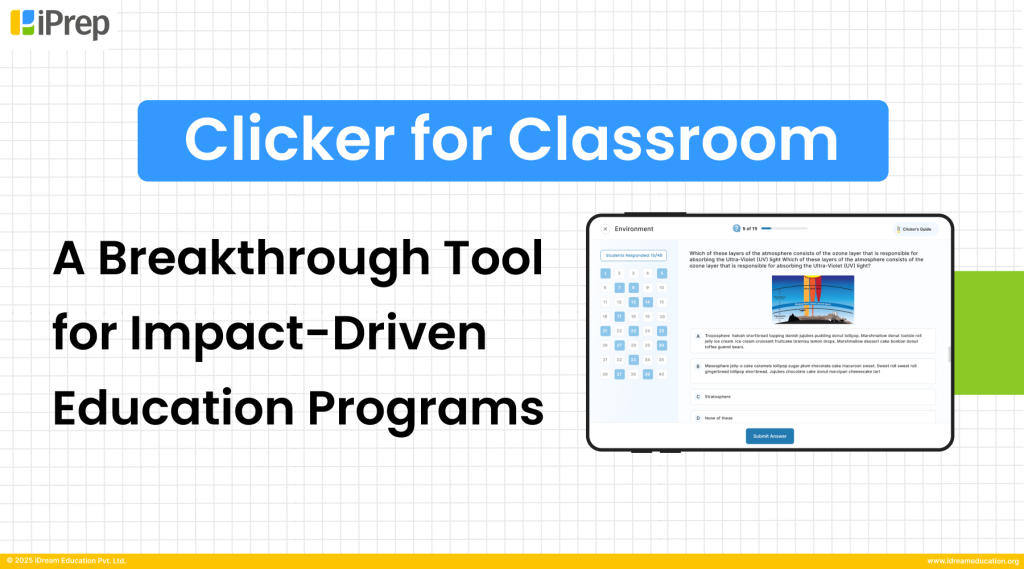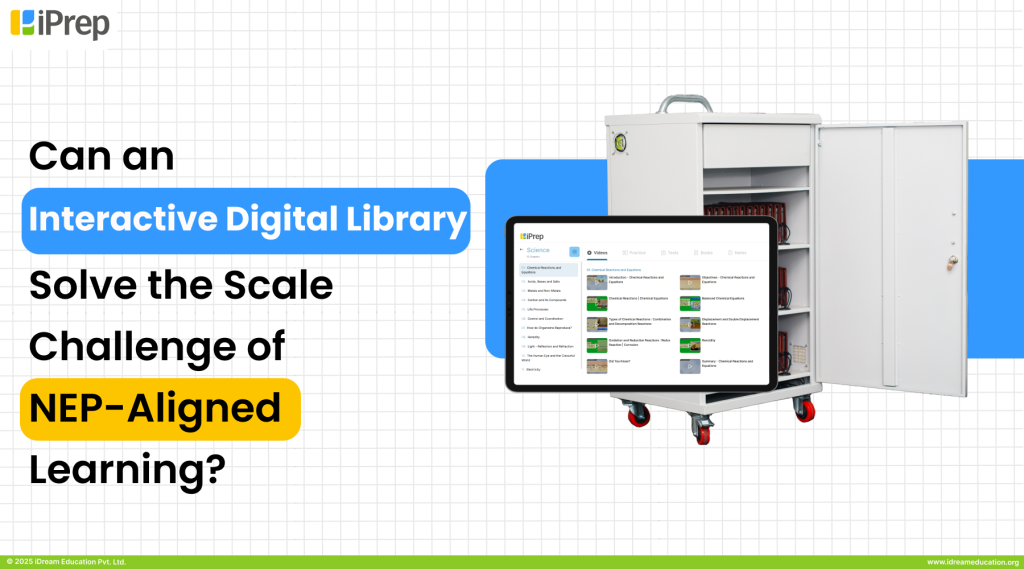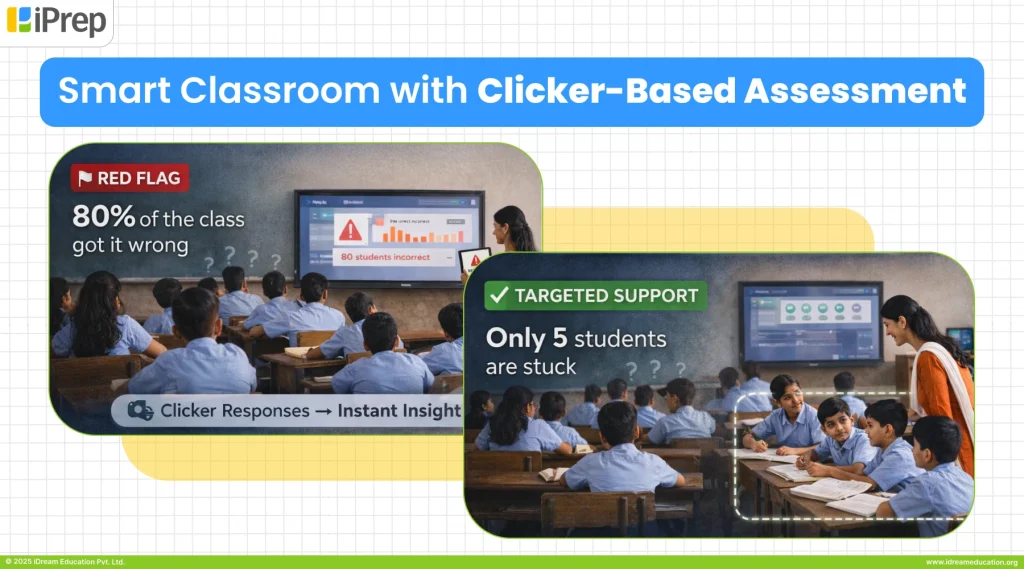Once a luxury, smart classes are now simple, scalable, and designed for every school – even in the remotest corners. With evolving tech, they’re easier than ever to set up, manage, and use. Step into the future of education with the power of Smart Classes.
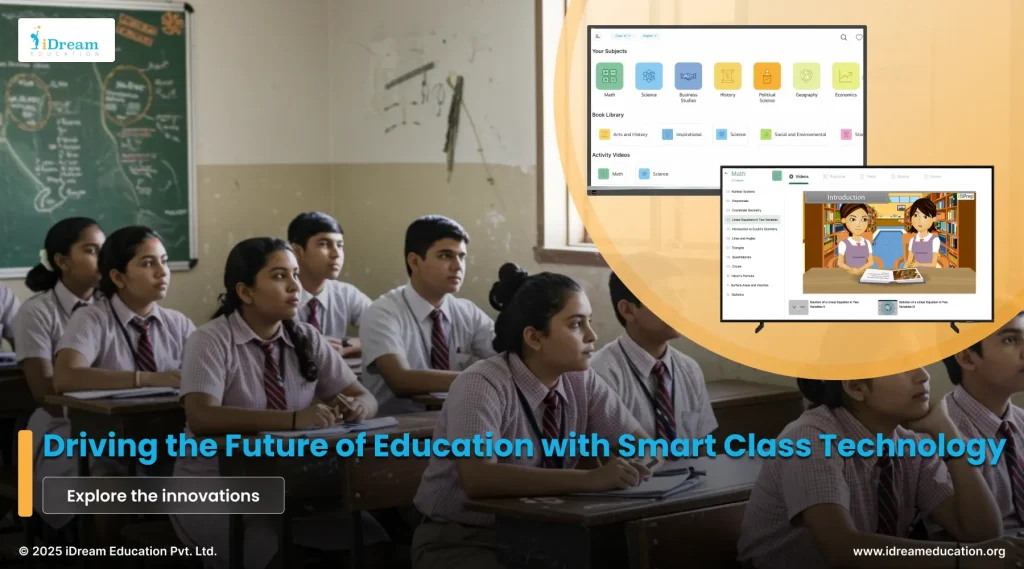
After COVID-19, the way we look at education has completely changed. Schools, teachers, and students all realized that technology is not just a support but a necessity for learning. This is where smart classes are making a big difference. Instead of only blackboards and books, classrooms today are equipped with interactive flat panels, smart TVs, digital whiteboards, and other modern tools that make learning more interesting and easy to understand. What’s even more inspiring is that governments, NGOs, CSR projects, and even hardware companies are working together to bring smart classes to schools across India. The idea is simple – every child should get access to comprehensive, and engaging learning experience, regardless of their location.
Government’s Role in Making Smart Classes a Reality
The Indian government has been taking strong steps to ensure that technology reaches every classroom, especially after COVID-19 highlighted the gaps in digital access. Various schemes and initiatives are being launched to make learning more inclusive and equitable. Programs such as
- Among 3 major Digital Education Projects under the ICT Scheme of Samagra Shiksha Abhiyan one is smart classes The Ministry of Education centrally promotes smart classrooms for all government schools in India.
- Operation Digital Board (ODB), a smart class specific initiative launched by the Ministry of Human Resource Development (now MoE) in 2019 is also a step towards enhancing the future of education. ODB aims to transform classrooms from class 9 onwards in government and aided schools into blended digital learning spaces.
- Under the PM SHRI scheme, ICT and Digital Initiatives have been identified as key drivers in transforming schools for students of Classes VI to XII. As part of this, smart classrooms are to be used for at least two periods per week per subject, ensuring that teachers regularly integrate digital resources into their teaching.
- The Delhi government has also taken a big step by approving an investment of ₹900 crore to convert 18,966 classrooms into smart classrooms across public schools. Under this initiative, classrooms will be equipped with interactive panels, audiovisual tools, and smart blackboards, bringing technology into everyday teaching and transforming the learning experience for students in government schools.
There are more official reports from the Ministry of Education (and there is a push through PM eVidya, National Digital Education Architecture – NDEAR) that discuss the push to equip schools in India with digital learning tools, including smart classes, which is a key driver of adoption.
But First, What Exactly is a Smart Class?
Smart Class is a digitally equipped classroom with a range of teaching and learning tools such as interactive flat panels, projectors, smart TVs, e learning platform, and digital content to make teaching and learning more engaging. When teaching through a smart classes, teachers can bring their lessons to life with animated videos, real-life examples, interactive diagrams, digital quizzes, and subject-specific multimedia content. Instead of only listening to theory, students get to see concepts in action, which makes even abstract or complex topics much easier to understand.
Further, smart classes cater to different learning styles. Some students learn best by watching, some by listening, and others by doing. With multimedia-based lessons, every type of learner finds something that helps them understand and remember better.
By integrating smart classroom technology into daily teaching, schools create a more inclusive, engaging, and student-friendly environment where learning feels less like memorizing and more like experiencing.
So, What Are the Main Objectives of Smart Classes?
Smart Classes are not just about putting a digital board or a screen in front of students. Their real purpose is to change the way teaching and learning happen. At the core, Smart Classes aim to make classrooms more engaging, inclusive, and effective for both students and teachers. Here’s how:
- To Create an Active Learning Environment: Smart Classes are designed to move beyond one-way teaching. By using multimedia and interactive content, the objective is to make students active participants in every lesson.
- To Encourage Experiential Learning: One key objective is to help students learn by doing. Through simulations, digital experiments, and practice activities, Smart Classes ensure that students apply concepts instead of only memorizing them.
- To Personalize Learning for Every Student: Smart Classes aim to support students with different learning speeds and styles. The objective is to give each child a fair chance to understand—whether they need visuals, repetition, or hands-on tasks.
- To Keep Students Attentive and Focused: Another objective is to make classrooms more engaging so that students stay interested. With interactive quizzes, real-life examples, and visually rich content, Smart Classes reduce distractions and hold attention.
- To Empower Teachers with Better Teaching Tools: Finally, Smart Classes aim to make teaching easier and more impactful. With curriculum-aligned digital resources, teachers can plan better, explain concepts more clearly, and create dynamic lessons.
Why Every School Today Needs Smart Classes?
Children today are already used to learning through visuals, videos, and mobile screens outside the classroom. If schools continue to teach only through chalk and talk, there will always be a gap between how students are wired to learn and how lessons are delivered.
Smart Classes bridge this gap. By using animations, videos, and interactive content, they bring subjects to life in a way that captures students’ attention and sustains it long enough for real learning to happen.
From our field experiences in both rural and urban government schools, we’ve seen the change first-hand:
- Teachers find it easier to handle classrooms and explain complex concepts of subjects such as Math and Science.
- Students who once stayed silent start participating through interactive simulation, practice, video lessons and lot more.
- Attendance improves because children look forward to smart class periods and learning from smart class content.
This is not about replacing blackboards, but about strengthening them with tools that match how children learn today. And that is why Smart Classes are no longer an extra, they are the bridge every school needs to connect with its students in today’s world.
Smart Classes Are Powerful, But Do They Really Work in Government Schools?
Smart Classes have been introduced in schools for more than a decade now. They promised to transform classrooms, and in many ways they have. But when we look closely at government schools, the story is not always so smooth. Despite the potential, many schools still struggle to use Smart Classes to their full benefit.
- Complicated Setup and Maintenance: Old smart class hardware-heavy setups such as projectors, CPU-based systems, required technical knowledge to operate. Further, turning on and off the entire setup takes time since every component is linked to one or the other device. Hence, when something stopped working, there was usually no local support to fix it quickly, leading to weeks or months of disuse.
- High Maintenance & Frequent Technical Breakdowns: Dusty environments, power fluctuations, and lack of regular servicing made the equipment unreliable. Even a simple issue like a loose cable or remote/keyword not working could stall an entire class. Teachers often gave up on using the system altogether after a few such failed attempts.
So, What’s the Fix? The Need for Smarter, Simpler Hardware
From our work across government schools in many states, one thing is clear: Smart Classes will only work if teachers feel comfortable using them every day. If the setup is complicated, teachers naturally hesitate. But when the technology feels simple and familiar, adoption becomes easy.
Think about it: when television first entered rural households, no one needed training to use it. Within a short time, people of all ages became comfortable with it because it was easy and natural to operate. The same psychology applies to teachers in schools.
That’s why the future of Smart Classes lies in simplifying the hardware. Instead of multiple components such as projectors, CPUs, remotes, speakers – imagine replacing everything with a single device, like a Smart TV. This not only reduces maintenance but also matches the comfort level teachers already have with using TVs.
By aligning Smart Class technology with tools teachers are familiar with, we can reduce resistance, encourage regular use, and truly integrate digital learning into everyday teaching in government schools.
From Ground Realities to Innovation: Introducing iPrep Digital Class
After visits to government schools, closely working with teachers, and real ground-level experiences. One thing we were certain about: for smart classes to be adopted widely, they must be easy to set up, simple to manage, and effortless to use. With this in mind, iPrep Digital Class is built as a single, integrated Smart Class setup that removes all the complexity of projectors, CPUs, and multiple devices.
It can be set up with a single piece of hardware that comes with a pre-installed K-12 LMS and preloaded digital content for all classes, ready to use from day one. It is designed to work smoothly in classrooms where infrastructure is often limited, and where teachers may not have technical training. By combining everything into one simple setup, iPrep Digital Class ensures that technology becomes a teacher’s friend, not a burden. Further, it allows for offline delivery of digital content, complete with reporting features, so there’s no need to connect to the internet before each session. This offline capability also tracks usage, which syncs to project-level dashboards once the device reconnects to the internet. This usage data can be utilized by government officials and project stakeholders to monitor progress and implement data-driven strategies to enhance learning outcomes.
This is not just another Smart Class, it’s a solution designed for the real needs of schools, teachers, and students in India.
Let us Now Look at the Practical Benefits of a Single-Unit Smart Class Setup like iPrep Digital Class
- The setup is extremely convenient. It requires no heavy wiring, no big infrastructure changes. It can be mounted on any wall with just one stand and four screws. This means schools don’t have to wait for renovations; classrooms can be ready in no time.
- Using it is just as easy. Teachers only need to switch it on, navigate through the built-in Smart Class LMS, and access digital lessons with a simple remote or touch option. No technical expertise, no extra hassle.
- What makes it even more practical is that it works completely offline. With just a pen drive plugged in, all content becomes accessible. There is no dependence on internet connectivity, which is a major challenge in many government schools.
- And smart classes can be setup for all grades. From a Learning TV in Anganwadis to Interactive Panels for secondary and higher grades. With the right content, Smart Classes can support teachers across all subjects and classes.
With iPrep Digital Class, Smart Classes don’t feel alien technology – it’s familiar, simple, and built to fit into the natural teaching flow of our schools.
Why Are Smart Classes Becoming the Future of Education?
The real reason Smart Classes are gaining momentum across schools is not just because they look modern, but because they are easy for teachers to adopt and use every day. Here’s Why iPrep Digital Class is Driving Smart Classes Towards the Future of Education
Learning Content in Local Languages
When teachers and students get to learn in their own mother tongue, learning becomes natural and comfortable. That’s why iPrep smart class offers content in Hindi, English, and multiple regional languages. This motivates teachers to use it regularly as they don’t have to struggle with language gap, it feels like an extension of their own teaching style.
Curriculum Aligned content
When all the smart class content is mapped with CBSE and State Board curricula, it empower teacher to integrate it with their regular lesson planning and teaching instruction. This alignment ensures seamless teaching and drives higher adoption of Smart Classes in government schools.
Easy-to-Use, Just Like TV
Navigating content on iPrep smart class is as simple as changing channels on a television. The categories are organized just like textbooks and chapters, making it quick for teachers to find exactly what they need, without wasting time. This simplicity encourages teachers to use Smart Classes every day.
Usage Analytics & Monitoring
Our Smart Classroom LMS doesn’t just stop at providing content, it also tracks how often teachers use it. This data is regularly assessed us and shared with project stakeholders, creating an accountable ecosystem. Monitoring usage helps ensure Smart Classes are not lying unused, but are actively improving learning outcomes.
These focused innovations in Smart Classes, aligned with NEP, are shaping it for the future of education in India
Watch this video to see what a 21st-century smart class looks like and what it offers.
Closing Thoughts
Government initiatives are steadily pushing the implementation and usage of smart classes in schools. At the same time, smart class providers are bringing in technological innovations that make these setups simpler, teacher-friendly, and effective for students. Together, these efforts are driving the future of education in India – where classrooms are not just about teaching, but about engaging, inspiring, and preparing every student for the 21st century.
If you’re looking to set up smart classes or need a partner for complete end-to-end implementation of smart classes, we would be happy to connect. You may contact us at +91- 7678265039 or share your details here
If you want to see the real-life impact of smart classes, check out:
- How a Smart Class App Transformed Learning in EJH, Meghalaya
- Our guide to know what makes Best Smart Class Software: 6 must-have features to look for before choosing a smart class platform.
- Key Differences & Benefits of Digital Class vs Smart Class
- Benefits of Smart Classrooms for Schools
Frequently Asked Questions -
1. What are Smart Classes in schools?
Smart Classes are technology-enabled classrooms equipped with digital screens, interactive content, and tools to make teaching more engaging and effective.
2. How do Smart Classes help students learn better?
They use videos, animations, quizzes, and real-life examples to make complex topics easy, helping students understand and retain knowledge for longer.
3. Why are Smart Classes important for the future of education?
Smart Classes equip students for a digital future by making learning interactive and inclusive, while ensuring accountability and effective adoption of technology in schools.
4. Are Smart Classes being used in government schools?
Yes. Under initiatives like Samagra Shiksha Abhiyan and PM SHRI, thousands of government schools are adopting Smart Class technology across India.
5. How do Smart Classes support teachers?
Smart Classes provide ready-to-use digital content aligned with textbooks, saving teachers’ time and helping them teach more creatively and confidently.
6. Do Smart Classes work without the internet?
Yes. Many Smart Class solutions like iPrep Digital Class work completely offline, making them reliable in schools with low or no internet access.
7. Can Smart Classes support regional languages?
Absolutely. Smart Class content can be made available in Hindi, English, and other local languages, encouraging teachers and students to learn in their mother tongue.
8. What grades can use Smart Classes?
From pre-primary (Anganwadis) to higher secondary classes, Smart Classes can be set up with age-appropriate content for all grade levels.
9. How do Smart Classes align with NEP 2020?
Smart Classes support NEP goals by promoting experiential learning, capacity building, digital literacy, and foundational literacy and numeracy (FLN) in schools.
10. What makes Smart Classes easy to adopt in schools?
Simple hardware such as single-unit setups (Smart TVs/Interactive Panels), easy navigation, and board-aligned content make Smart Classes teacher-friendly.
11. How can schools choose the right Smart Class Provider?
Schools should look for smart class vendors offering simple, reliable setups, curriculum-aligned content, and easy-to-use interfaces for teachers.
12. What makes a good Smart Classroom Vendor?
A reliable vendor provides a single-unit, low-maintenance setup, curriculum-aligned content, teacher-friendly navigation, offline capabilities, monitoring tools for usage analytics and after implementation support.



